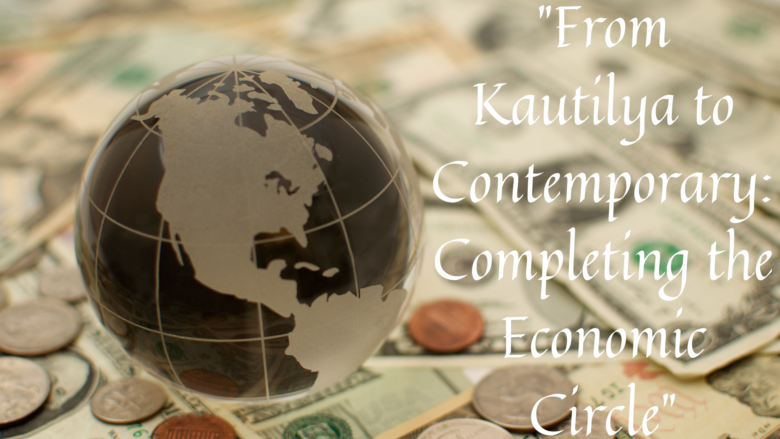In this final part of our series, we delve into the economic teachings of Kautilya and compare them with the ideas of Raghuram Rajan, Thomas Piketty, and Elinor Ostrom. This exploration aims to bridge ancient wisdom with contemporary economic thought, highlighting the timeless relevance of Kautilya’s insights.
Kautilya: The Architect of Economic Strategy
Kautilya’s “Arthashastra” offers a comprehensive view of statecraft, economics, and governance, emphasizing ethical and welfare-oriented policies. His work, although ancient, has significant implications for modern economic discussions.
Raghuram Rajan: The Maverick of Financial Economics
Raghuram Rajan, known for his critical analysis of financial and banking systems, emphasizes the importance of financial stability and economic equity.
Comparing Perspectives:
Financial Governance: Rajan’s focus on robust financial systems finds an early echo in Kautilya’s intricate policies for managing state finances and market regulation.
Economic Equity: Similar to Rajan’s concern for economic equity, Kautilya’s policies also aimed at ensuring fair trade practices and preventing exploitation.
Thomas Piketty: The Crusader Against Inequality
Thomas Piketty’s work centers on wealth and income inequality. He advocates for redistributive policies to address the growing economic divide.
Comparing Perspectives:
Wealth Distribution: Piketty’s focus on equitable wealth distribution resonates with Kautilya’s emphasis on the ruler’s role in maintaining economic balance and social welfare.
State Intervention: Both Piketty and Kautilya advocate for state intervention in the economy to ensure fairness and prevent excessive accumulation of wealth by a few.
Elinor Ostrom: Pioneer in Managing Common Resources
Elinor Ostrom’s groundbreaking work on how communities successfully manage common resources challenges conventional wisdom about property rights and collective action.
Comparing Perspectives:
Resource Management: Ostrom’s principles of collective management of common resources can be compared to Kautilya’s detailed regulations for managing state resources and public goods.
Decentralized Governance: While Ostrom emphasizes local self-governance, Kautilya’s approach involves a central authority overseeing resource management, showcasing differing scales of governance.
Conclusion
This three-part series has juxtaposed Kautilya’s ancient economic teachings with the ideas of nine modern economists, revealing the depth and relevance of his insights in today’s economic discourse. From market dynamics and statecraft to welfare policies and resource management, Kautilya’s ancient wisdom provides a unique perspective that enhances our understanding of both past and present economic principles.
Kautilya’s comprehensive approach to economics, emphasizing ethical governance and societal welfare, holds enduring lessons for contemporary economic challenges. His work not only enriches our historical understanding but also offers valuable insights into current and future economic policies.
Author’s Note: This series is an interpretative exploration, aiming to connect historical economic wisdom with modern theories. It is meant for thought-provocation and educational purposes.
Thank you for following this series. We hope it has provided a new lens through which to view both ancient and modern economic thought. Join the conversation by sharing your thoughts and insights.
Note: This blog concludes the three-part series.
About the Author: G. C., with a passion for economic history, seeks to bring together the old and the new, offering fresh perspectives on economic theory and policy.
References:
“Arthashastra” by Kautilya.
Works and theories of Raghuram Rajan, Thomas Piketty, and Elinor Ostrom.
Scholarly articles and research on ancient Indian economic principles.
© EcoSociosphere. All rights reserved. Unauthorized reproduction or distribution of this publication is prohibited.
Engage with Us:
EcoSociosphere – Where Ancient Wisdom Meets Modern Economics.





Comments
I don’t think the title of your article matches the content lol. Just kidding, mainly because I had some doubts after reading the article.
Thanks for sharing. I read many of your blog posts, cool, your blog is very good.
Can you be more specific about the content of your article? After reading it, I still have some doubts. Hope you can help me.
Thanks for sharing. I read many of your blog posts, cool, your blog is very good. https://www.binance.info/ka-GE/register?ref=RQUR4BEO